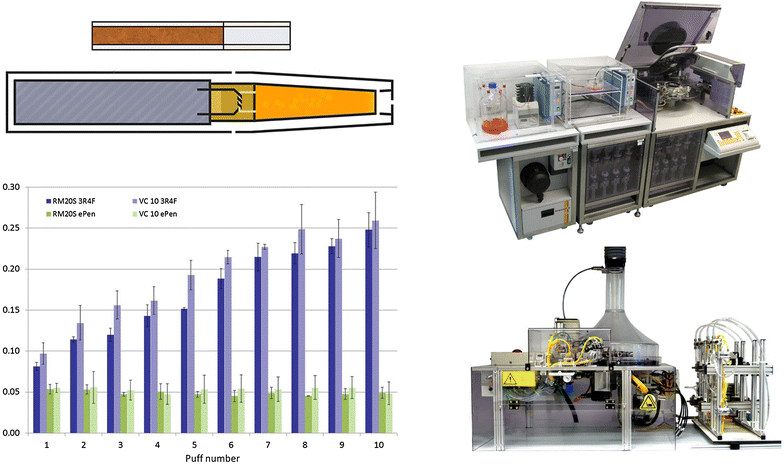
|
|||||
|
|
Application of dosimetry tools for the assessment of e-cigarette aerosol and cigarette smoke generated on two different in vitro exposure systems |
|
| Authors: | Jason Adamson David Thorne Benjamin Zainuddin Andrew Baxter John McAughey Marianna Gaça |
| Affiliation: | 1.British American Tobacco, R&D,Southampton,UK |
| Abstract: | The diluted aerosols from a cigarette (3R4F) and an e-cigarette (Vype ePen) were compared in two commercially available in vitro exposure systems: the Borgwaldt RM20S and Vitrocell VC10. Dosimetry was assessed by measuring deposited aerosol mass in the exposure chambers via quartz crystal microbalances, followed by quantification of deposited nicotine on their surface. The two exposure systems were shown to generate the same aerosols (pre-dilution) within analytically quantified nicotine concentration levels (p = 0.105). The dosimetry methods employed enabled assessment of the diluted aerosol at the exposure interface. At a common dilution, the per puff e-cigarette aerosol deposited mass was greater than cigarette smoke. At four dilutions, the RM20S produced deposited mass ranging 0.1–0.5 µg/cm2/puff for cigarette and 0.1–0.9 µg/cm2/puff for e-cigarette; the VC10 ranged 0.4–2.1 µg/cm2/puff for cigarette and 0.3–3.3 µg/cm2/puff for e-cigarette. In contrast nicotine delivery was much greater from the cigarette than from the e-cigarette at a common dilution, but consistent with the differing nicotine percentages in the respective aerosols. On the RM20S, nicotine ranged 2.5–16.8 ng/cm2/puff for the cigarette and 1.2–5.6 ng/cm2/puff for the e-cigarette. On the VC10, nicotine concentration ranged 10.0–93.9 ng/cm2/puff for the cigarette and 4.0–12.3 ng/cm2/puff for the e-cigarette. The deposited aerosol from a conventional cigarette and an e-cigarette in vitro are compositionally different; this emphasises the importance of understanding and characterising different product aerosols using dosimetry tools. This will enable easier extrapolation and comparison of pre-clinical data and consumer use studies, to help further explore the reduced risk potential of next generation nicotine products. Graphical abstract A cigarette and an e-cigarette (top left) were assessed on two different in vitro exposure systems, the Borgwaldt RM20S (top right) and the VC 10 (bottom right). Compositionally the product aerosols were different, but there was no difference between the same product on different machines (bottom left). |
| Keywords: | |
| 本文献已被 SpringerLink 等数据库收录! | |
